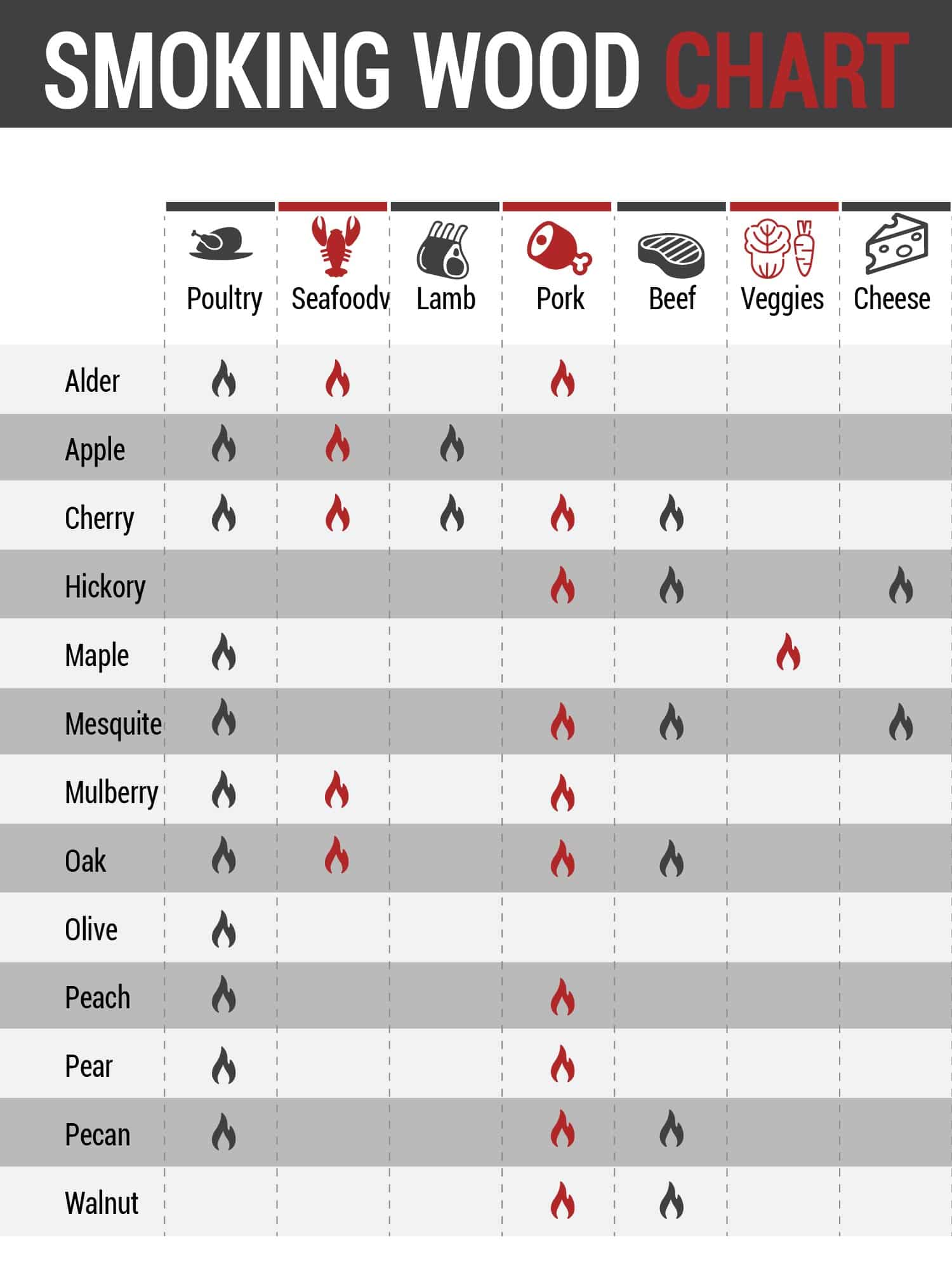
That’s why the art of smoking meat takes time to perfect as you experiment with various aromas and flavors. Some folks may find certain woods more appealing than others overall, or in concert with a specific type or cut of meat, and in certain ratios. That said, the level of smoke, as well as the taste, can be highly subjective.
#WOOD SMOKING FLAVOR CHART HOW TO#
If you’ve ever had fall-off-the-bone ribs, then chances are that they were smoked as opposed to grilled (see our How to Smoke Ribs Guide). Smoking also tenderizes meats that would normally be too hard to eat. If you don’t happen to have a friend who smokes meats, or the person just doesn’t want to accept your challenge, we can confirm that smoking is done to create better overall flavors and aromas in your finished product. Unless you’re dead inside, or have malfunctioning taste buds, you’re likely to understand the reason immediately. Then, decide if the flavor difference is truly worth it. In the end, the goal is to taste test your regularly-grilled meat against your friend’s smoked meat. Invite friends to sample both dishes, and see the feedback for yourself. Put your current cooking style up against the smoker’s, side-by-side. Here’s a fun way you can answer that question yourself: Find someone who does smoke their meats and have yourselves a good, old-fashioned cook-off! If you’re not the type of person who likes to take extra steps in the cooking process, then you may be wondering if it’s worth it to smoke your meats at all. With that in mind, let’s get to the basics of smoking meat. Once you do, you’ll never go back to cooking the old way again. Like any artistic endeavor, it takes time, patience and practice to master your craft (some subscribe to the 10,000 hour rule). We’ve noticed that our leftover meat tasted about the same, but our leftover Smoked Deviled Eggs and Smoked Potato Salad had the smoke flavor intensify significantly the second day.In the end, smoking meats is like art. Important: Know that leftovers that are not meat-based seem to have the smoky flavor intensify the longer it is kept in the refrigerator. We enjoy a light smoke flavor and used a nice cherry wood for the first few hours when we grilled our next rib roast. The taste was fantastic and not smoky at all, yet it was the most tender cut of meat she has ever had. I grilled it low and slow for over 9 hours at 225 but there wasn’t any wood in my Big Green Egg, just charcoal.

Now, add a couple of chunks of a mild wood for your next batch and take notes on how you and your family liked it.įor this example, I smoked a rib roast for my mother in law who doesn’t love too much smoke. Grill your favorite dish without any smoke to serve as the baseline for comparison. Go for the fruit woods and see what you like before hitting hard and heavy on the hickory and mesquite.įor anyone that is super nervous about starting to smoke, I suggest doing a faux smoke.

If you are new to smoking and aren’t sure what you like, begin with light and easy. I love to try new things and am interested in what you found success with. If you have tried pairings that are not listed, and you loved it, then drop me a note below. It goes well with Poultry, Seafood and Veggies. Maple Wood is sweet and mild but will leave a darker appearance. The only one that it doesn’t go well with is Pork. It goes well with Beef, Poultry, Lamb, Seafood, Baking and Veggies.


Match Your Recipe to a Type of Wood for a Complementary Flavor!įor example: Apple Wood is a sweet, mild fruity flavor to your meat. Step Three: Pair up the type of food you will be grilling to the complementary woods. The more intense flavors can overpower a dish if you’re not careful. If you haven’t used wood to smoke, then I recommend starting out with the more mild smoke flavors. Step Two: Look at the types of wood and the flavor columns. Each piece of wood that you choose to smoke with gives off a different intensity of smoke that will flavor the meat. This is the area that I call attention to first and will be the most important. Step One: Look at the left hand side of the page first as it will guide you through the MILD to STRONG intensity scale.
#WOOD SMOKING FLAVOR CHART PDF#
Quick Reference Tool – This one sheet PDF can be printed off and hung in the pantry or you can add a magnetic sheet to the back of it for quick and easy reference on the side of the refrigerator. Does peach wood go well with beef? Will hickory work with chicken? The answers are all there for you on a one page PDF. It’s not always easy to know which kind of wood to smoke with each package of meat I plan to put on the grill.


 0 kommentar(er)
0 kommentar(er)
